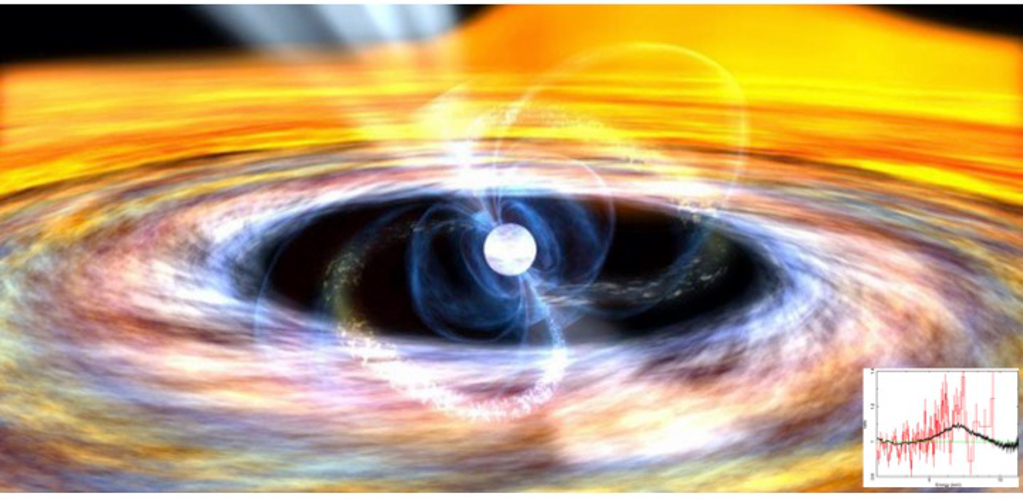
 Credit: NASA/Goddard Space Flight Center/Dana Berry; King et al. 2016
Credit: NASA/Goddard Space Flight Center/Dana Berry; King et al. 2016
Truncating the Disk
Neutron stars are incredibly small, massive and dense objects, the crushed cores left behind after the supernova explosion of a star which has at least 8 times the mass of the Sun. Typically, neutron stars pack the mass of the Sun into a sphere of only a few kilometers across, and are so dense that one teaspoonful of neutron star material has as much mass as the entire human population of earth.
Some neutron stars are members of binary systems, orbited by a normal star. In these binaries, the neutron star's intense gravity can strip gas from the normal star onto the neutron star. This gas flows in a stream and spirals onto the neutron star, forming a thin, extensive, hot accretion disk around the neutron star. As material falls onto the neutron star, it heats up to temperatures of millions of degrees, producing X-ray emission. A recent study using X-ray data from NASA's NuSTAR and Swift high energy space observatories has provided important new information on the structure of the disk in an important X-ray binary, Aquila X-1, and new details of the accretion process. The image above shows an illustration of the accretion disk in Aql X-1 surrounding the neutron star. The inset shows data from NuSTAR (in black) and Swift (in red) of X-ray emission produced by iron atoms in the accretion disk. The symmetrical shape of this emission with energy indicates that the emitting material does not exist close to the neutron star's surface, since, if it were close, distortions of spacetime near the neutron star would distort the shape of the iron emission. Astronomers believe that the strong magnetic field of the neutron star in Aql X-1 truncates the inner edge of the accretion disk far from the neutron star's surface, as shown in the illustration above. However, variations in the X-ray emission from Aql X-1 shows that disk material does fall onto the neutron star somehow; most likely this material is channeled by the neutron star's magnetic field from the disk onto the neutron star's solid iron surface.
Published: June 6, 2016
<
HEA Dictionary ● Archive
● Search HEAPOW
● Other Languages
● HEAPOW on Facebook
● Download all Images
● Education ● HEAD
>

Each week the HEASARC
brings you new, exciting and beautiful images from X-ray and Gamma ray
astronomy. Check back each week and be sure to check out the HEAPOW archive!
Page Author: Dr. Michael F. Corcoran
Last modified Monday, 26-Feb-2024 17:22:58 EST


